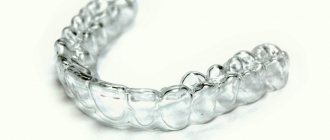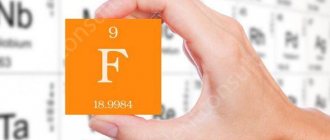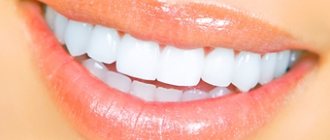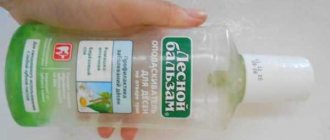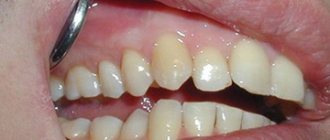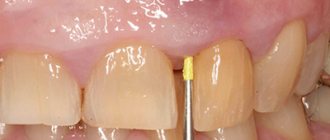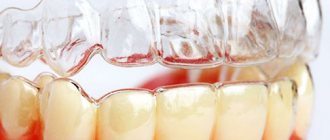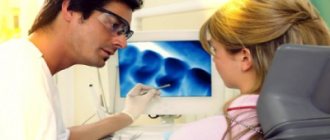Is it worth keeping wisdom teeth?
A number of experts believe that it is advisable to remove figure eights in adolescence, when their root system has not yet fully formed, and the jaw bones have not acquired the density characteristic of adult patients. Others are of the opinion that the teeth that erupt later than others are best left in the dentition if:
- the tooth is positioned correctly in the jaw bone, grows vertically and is fully erupted without forming a pocket over it;
- the tooth is available for dental manipulation in case of caries development;
- the root system and the condition of the tooth crown make it possible to use the “eight” as a support for a prosthesis;
- There is enough space on the jaw and the appearance of another “combat unit” will not provoke crowding of the teeth.
The main problem with wisdom teeth is that they are not involved in the act of chewing, so their surfaces are much less easily cleaned of bacterial plaque and tartar. Inspection of a crown located in the depths of the oral cavity by the person himself is difficult, especially in cases where part of it is covered by the gum. This causes the formation of complications of an advanced carious process.
Particular attention should be paid to impacted teeth that are located in the soft tissue of the gums or jaw bone. In fact, this is a “time bomb” that can explode at any moment. The “figure eight” located in the tissues can become inflamed, simulating the symptoms of acute otitis media and pharyngitis. The active inflammatory process is accompanied by a significant rise in temperature, pronounced intoxication. It can be difficult to make a diagnosis in such conditions, since the problematic tooth may not show itself in any way, and doctors of several specialties will have to be involved in the diagnosis.
How to brush your teeth to get rid of caries -
Different oral hygiene products are not equally effective. For example, regular manual toothbrushes are significantly worse at removing microbial and pigmented plaque - compared to electric toothbrushes. This is especially important for smokers, lovers of strong tea or coffee, with irregular hygiene, as well as for patients with a high rate of plaque formation.
The head of an electric toothbrush makes about 7,600 back-and-forth movements per minute, plus at least 20,000 pulsating movements per minute. The latter allow you to loosen tightly attached dental plaque, facilitating its removal by reciprocating rotational movements and abrasive components of the toothpaste. Overall, using this brush will improve your hygiene by several levels.
→ How to choose an electric toothbrush → What are ultrasonic toothbrushes
Traditional manual toothbrushes –
If we talk about ordinary manual toothbrushes, then they should be of medium hardness (medium), because... Brushes with soft bristles will be several times worse at removing plaque. You need to change your brush not just once every 3 months, but as soon as you see that the bristles of the brush begin to stick out in different directions. Remember that all sorts of bells and whistles in the form of intersecting bristles, rubber antennae supposedly for cleaning interdental spaces and massaging gums are all just marketing.
Toothbrushes are a product with a short life cycle, so in order to attract consumer attention to their brushes, manufacturers are forced to release several new models every year that are somehow different from competitors and have more and more new characteristics. Well, the rubber antennae do not clean the interdental spaces, and they cannot massage the gums any better than ordinary nylon bristles do. And no intersecting bristles can clean the interdental spaces in their depths. But in advertising you can say all this.
In general, the main thing in a manual toothbrush is high-quality nylon bristles + proper brushing technique (+ you should not forget to floss before brushing). We hope that you know that the movements of a manual toothbrush should only be sweeping - from the gum to the tooth, while the brush should scroll slightly along its axis.
Technique for brushing teeth with a manual toothbrush: video
Thus, on the upper jaw, sweeping movements are made from top to bottom, and on the lower jaw, from bottom to top. Moreover, sweeping movements are suitable not only for cleaning not only the front, but also the lingual/palatal surfaces of the teeth. And only the chewing surfaces of the teeth are cleaned with the usual reciprocating horizontal movements of the toothbrush.
Which toothpastes are best for caries?
Fluoride-containing toothpastes can help you get rid of dental caries. They have the best caries-preventive effect. Fluoride ions interact with hydroxyapatite, which makes up tooth enamel, turning it into fluorohydroxyapatite. The latter is much more resistant to the effects of cariogenic bacteria and the acid they produce than ordinary hydroxyapatite.
In turn, pastes with calcium, although they help saturate tooth enamel with calcium, they do not have such a pronounced anti-caries effect as pastes with fluoride. To enhance the caries-preventive effect of pastes with calcium, xylitol is additionally added to them. However, studies show that when using toothpastes without fluoride, the incidence of caries is at least 30% higher (therefore, their use is justified only in regions with high concentrations of fluoride in drinking water).
→ Fluoride content in drinking water by regions of Russia
Examples of the best toothpastes -
In our opinion, one of the best options for children and adults are Colgate® ELMEX toothpastes. These pastes contain the most effective form of fluoride - aminofluoride (synonym - olaflur). Elmex toothpastes are a professional line of Colgate toothpastes, which use more expensive and high-quality components compared to regular toothpastes from this company. You can also give high marks to toothpastes of the President brand (Italy).
However, even the best toothpastes such as Elmex or President (as well as any other high-quality therapeutic and prophylactic toothpastes from other manufacturers) are an excellent remedy for caries, mainly only in patients with regular oral hygiene. All these pastes for teenagers and adults contain a fairly high concentration of fluoride 1450 ppm, which is quite enough for excellent caries prevention with regular hygiene.
However, even this concentration is not enough to prevent caries in patients with irregular hygiene. For such patients, there is a separate group of toothpastes with an increased dosage of fluoride. For children over 16 years of age and adults, Colgate® Duraphat medicinal paste containing 5000 ppm fluoride can be used for intensive caries prevention, and for children over 10 years old the same paste with 2800 ppm fluoride can be used (see links below).
- The best medicinal pastes for caries
- The best toothpastes for children - rating 2021
Is it painful to have a wisdom tooth removed?
Everything is very individual and depends on the volume of dental procedures that need to be performed in order to extract the tooth. According to statistics, the upper “eights” are easier to remove than the lower ones, and a fully erupted crown is easier to grasp with forceps than an impacted one.
The removal process is carried out under local anesthesia, so the patient does not feel any particular physical discomfort. Some time after the local anesthetic wears off, pain of varying severity may be present. The more tissue was damaged during the removal of a tooth or its parts, the higher the likelihood that it will not be possible to do without taking analgesics.
The most unfavorable situation is when a tooth grows from the horn of the upper jaw and is located horizontally in the bone, resting its chewing surface on the side of its neighbor. Here you cannot do without an operation, which can take an hour or more.
Preventing dental caries: conclusions
In this article we tried to give answers to the questions: how to get rid of caries, how to prevent caries, how to defeat caries, is there any salvation from caries... Let us repeat that there is the following algorithm for effective prevention of caries:
- Firstly , measures aimed at removing soft plaque and tartar. This is nothing more than oral hygiene. It should be noted that good hygiene is the best cure for caries.
- Secondly , a rational diet that limits the use of easily digestible carbohydrates (found in sweets, flour, and sugary drinks) between main meals and teaching your children to do this is also an excellent remedy for caries.
- Thirdly , these are measures aimed at increasing the resistance of tooth enamel to the destructive effects of organic acids produced by cariogenic microorganisms in the oral cavity.
This includes the use of toothpastes with calcium and fluoride at home, as well as periodic visits to the dentist once every 3-6 months (the frequency depends on the growth rate of new caries lesions). Also, preventive actions include sealing the fissures of teeth in children, in which deep fissures (grooves) on the chewing surfaces of the teeth are sealed with liquid filling materials. We hope that our article on the topic: How to prevent dental caries, effective caries prevention - turned out to be useful to you!
Sources:
1. Higher professional education of the author in dentistry, 2. Based on personal experience as a periodontist, 3. The European Academy of Paediatric Dentistry (USA), 4. National Library of Medicine (USA), 5. “Therapeutic dentistry. Textbook" (Borovsky E.), 6. "Pediatric therapeutic dentistry. National leadership" (Leontyev V.).
How is the removal done?
In simple cases, “eights” are pulled out according to the standard scheme, which includes:
- Inspection and examination. The doctor visually and using instruments determines the position of the tooth in the jaw, its condition, indications and contraindications for removal. An x-ray is required to exclude “surprises” in the form of roots bent with a fishing hook, which are guaranteed to break and remain in the bone when removed, or a jaw cyst.
- Anesthesia. Typically, lidocaine, novocaine and other local anesthetics are used, which are injected into the gum tissue on both sides of the alveolar process of the jaw. The drug begins to act a few minutes after the injection. Just in case, the doctor checks the level of numbness by touching the mucous membrane and observing the person’s reaction. Complex operations can be performed in a hospital setting under general anesthesia.
- Delete. If the tooth crown is located on the surface, then it is grabbed with forceps, loosened and removed. If it is completely or partially covered by the mucous membrane, then first an incision is made. After pulling out a tooth, the doctor places sutures on the mucous membrane in order to prevent inflammation and stop bleeding.
What problems can be dealt with at home?
If everything is in order with the oral cavity, then proper hygiene is enough for care. In all other cases, you need to go to a specialist. There are no problems that can be dealt with at home. Gargles, chamomiles, “grandmother’s” recipes are absurd. We live in the 21st century and must clearly understand that if there is pain, inflammation or any other problems with the oral cavity, you need to contact a dentist.
Moreover, in case of gum diseases, a specialized specialist is needed - a periodontist. He will determine the causes of inflammation and formulate a course of treatment. If the problem is a bad filling, he will send you to a therapist, if there is a problem with an incorrect bite, he will be sent to an orthodontist, and so on. If it is possible to get by with professional cleaning, he will do it.
Consequences of wisdom tooth removal
According to statistics, the longer you delay removal, the higher the risk of complications. Adverse consequences of the procedure include:
- nerve damage, which is accompanied by numbness of the oral mucosa;
- damage to the enamel of adjacent teeth;
- fracture of the jaw when excessive pressure is applied to it.
These complications occur equally often during tooth extraction of any location. During the recovery period, it is necessary to pay attention to the condition of the hole left after tooth root removal. Normally, a blood clot forms in it, which creates optimal conditions for healing.
If you wash out this clot while rinsing, a complication known as a dry socket is formed. The walls of the cavity become inflamed, and a constant dull pain appears. A dry socket does not heal on its own. It is necessary to carry out anti-inflammatory treatment and take anesthetics. For this purpose, it is advisable to consult a doctor as soon as possible and get a prescription.
Signs indicating gum problems
Most problems are caused by improper care. Even when talking with a patient, a dentist can determine the condition of his gums and understand how healthy they are. In principle, these signs are visible to any attentive observer:
- red-inflamed gum color, and not pale pink, which should be normal;
- plaque on the teeth and around the gums;
- inflammation as swelling;
- bad breath.
It is impossible to understand exactly what disease specific signs indicate on your own; only a doctor can find out. It can detect caries, gingivitis, periodontitis. If we are talking about the latter disease, then here too there are diagnostic nuances, since periodontitis can be with or without inflammation.
Oral care after wisdom tooth removal
Slight pain, swelling in the area of the angle of the lower jaw and cheek, difficulty opening the mouth is normal if the symptoms appear on the first day after tooth extraction and their intensity decreases day by day. Following the doctor’s recommendations can reduce the likelihood of complications and facilitate the healing process:
- do not eat during the first 3 hours after tooth extraction;
- Avoid eating hot foods and drinks;
- do not chew on the injured side;
- take baths instead of actively rinsing the mouth;
- do not heat the area of swelling, avoid any thermal effects on the facial area.
The dentist may prescribe antibiotics for preventive purposes. They must be taken in the indicated dosage as a full course.
What dentistry offers - professional hygiene
We have figured out how to care for the oral cavity and teeth at home, and now let’s move on to the question of what dentistry offers in this regard. Every six months, all people without exception should undergo professional oral hygiene. This is an integrated approach to ensuring competent and comprehensive prevention of dental diseases. As part of the procedure, the specialist removes plaque, removes hardened deposits, fluorides the enamel, strengthens the gums - read more about each aspect of professional comprehensive care:
- removal of plaque and deposits using ultrasound or laser: an ultrasonic scaler delivers waves and vibrations that literally break the stone, and immediately, due to the supply of a water jet, impurities are removed from the oral cavity. A laser device operates in a similar way, only in this case the beam acts more precisely, which avoids overheating of hard tissues,
- Air-Flow abrasive cleaning: sometimes the device is used as part of an independent procedure, but its use is also a prerequisite for comprehensive hygiene. A water jet with the addition of an abrasive mixture is supplied through a high-pressure tip, which allows you to effectively remove plaque residues and additionally polish the enamel. Afterwards, special abrasive pastes are applied to the surface of the teeth for even better polishing,
- fluoridation of enamel: the enamel is coated with a protective fluorine varnish with a high concentration of calcium and fluorine. It provides not only protection, but also nutrition of hard tissues, saturating them with useful components. After the procedure, you should give up drinks and food for at least half an hour - this time is enough for the formation and strengthening of the protective shell,
- strengthening the gums: after removing deposits, including their removal from the subgingival area, the mucous membrane is restored naturally. To accelerate regenerative processes, soft tissues are treated with an antibacterial solution, after which a special hydrogel is applied and a collagen membrane soaked in medicinal plant extracts is placed on top - after a while it dissolves on its own.
The photo shows professional oral hygiene
Professional hygiene is a procedure recommended for everyone and mandatory for patients who have implants, dentures or, for example, braces in their mouth. It is also necessary to undergo it in the complex treatment of chronic inflammatory diseases of the gums and periodontal tissues - periodontitis, periodontitis. In such cases, curettage usually has to be added to the above procedures. If the depth of periodontal pockets exceeds 5 mm, open curettage is performed with cutting the gums, cleaning and polishing the roots.
